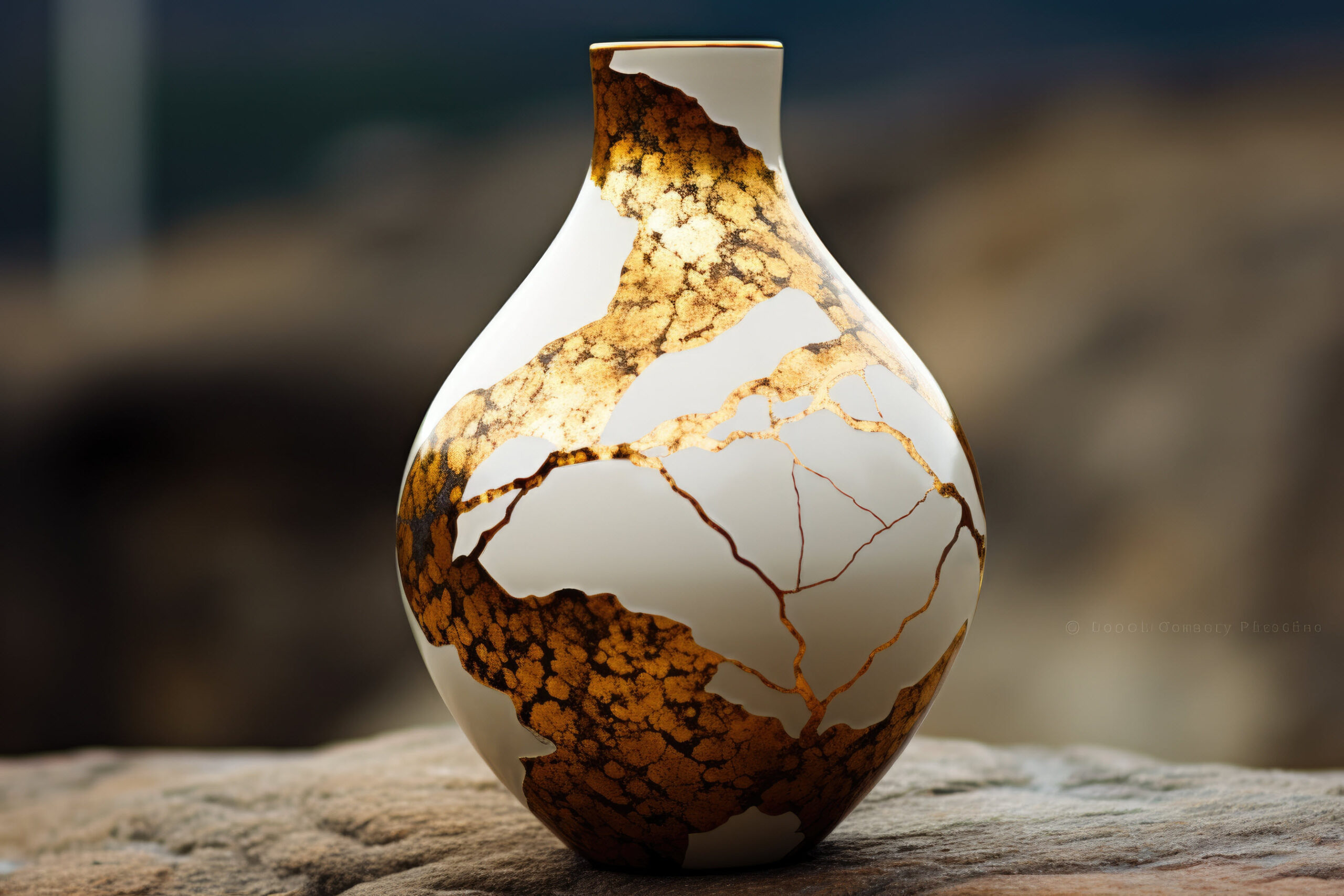Becoming more valuable for having been broken.
The Japanese art of repairing shattered pottery with liquid gold or silver to return the piece to wholeness, can be your beautiful guide to healing a shattered heart too.
It’s easy to stay lost in brokenness. Mainly because we are designed that way. When survival mode is triggered, adrenaline becomes the biggest narcissist in the body, takes up the most attention, won’t let you rest, keeps your mind racing, stuck in contraction, fear, anger and stress.
It keeps your edges sharp, weaponised, hurting and brittle. ’Adrenaline’s job is to keep you alive. It will isolate you, whisper in your ear that you’re not safe, keep you running on a lonely path, often into full breakdown and collapse.
It will make you edgy and brittle, even with those looking to help you. Your wholeness is shattered into little shards of broken self. You can’t persuade your mind on adrenaline to slow down, to heal, to take rest.
You are not sober.
The chemical dictator adrenaline is not reasonable. It is both brilliant and limited to just keeping the meat alive. Not beautifully alive, not with wholeness and balance, not with kindness: Just in survival mode.
This is where, eventually, your body will step in and force you to rest. Adrenal burnout. Nervous breakdown. Illness. Forcing you into deep rest through brokenness.
Heartbreak and grief are their own kind of broken and can’t be forced to heal. The full healing is in the letting go, not the forcing. Consciously choosing where the piece is still strong enough to return and where the shards need to be gently sanded and bonded back together with liquid gold.
Healing is often not beautiful. It’s tears and snot and trembling. It often takes more time than we anticipate. It involves a decision to change and focus into the rest and digest part of our nervous system.
Being kind to your sharp edges, collecting the shards of yourself and being willing to share your pain goes against so much of what is valued as rugged self-determinism in the western world. Scar tissue can bind us into contortion, a lack of growth and movement if we don’t free it up.
When a cup is shattered on the floor, it is no longer able to be a cup. When we are shattered, the inner saboteur tends to work in conjunction with the inner narcissism of adrenaline, keeping you isolated and convinced there’s no possible way to create change. This serves you in the beginning, when the only important thing is to keep breathing, keep your heart pumping, keep the spark of life.
But there comes a point when this survival state no longer serves us. Often, we are doubly isolated when adrenaline evokes fear and shame that we can’t ‘fix ourselves’.
Making a decision to relax into the parasympathetic nervous system and break away from the isolation of adrenaline and pain is often the first step towards rebuilding a shattered self. The voice of adrenaline is slowed, quieted through support and healing space, which we often need community for. If we don’t find our tribe, our nourishing spaces, we become hardened by life, afraid to take emotional risks, unable to discern between real threats and false evidence appearing real.
It’s the hardest step in the world to reach out for help, for healing, to be heard when individualism is touted as the ultimate goal.
To be kind to yourself.
Healing requires a tribe.
A community.
A safe place to fail.
To start again, to learn.
To play, to be held, to dance, to express.
To move through the somatic, the sentient and the soul.
Only then can you really begin to find space within the pieces of your being to reassemble.
For some, It’s a total life reset on retreat. For others, conscious touch, being hugged. Healing with kindness is practical. It’s having help with childcare, or meals prepared when you’ve just lost a loved one. Sometimes it’s just sending and receiving a text, or staying in bed and listening to a guided meditation.
Small steps are still steps. They tend to be easier in the long run to create lasting change. Slowly we ask others to help us with our sharp edges so that we can stop cutting ourselves trying to put the pottery back together in the way it used to be.
You are the architect of your kintsukuroi process and your tribe and deep rest are the golden glue. There are many paths and communities that can help you put yourself back together. It starts with a conscious decision to find your kindness tribe, your community, your support systems.
Reach out. May you become more valuable for having been broken. May you find your kintsukuroi heart.





